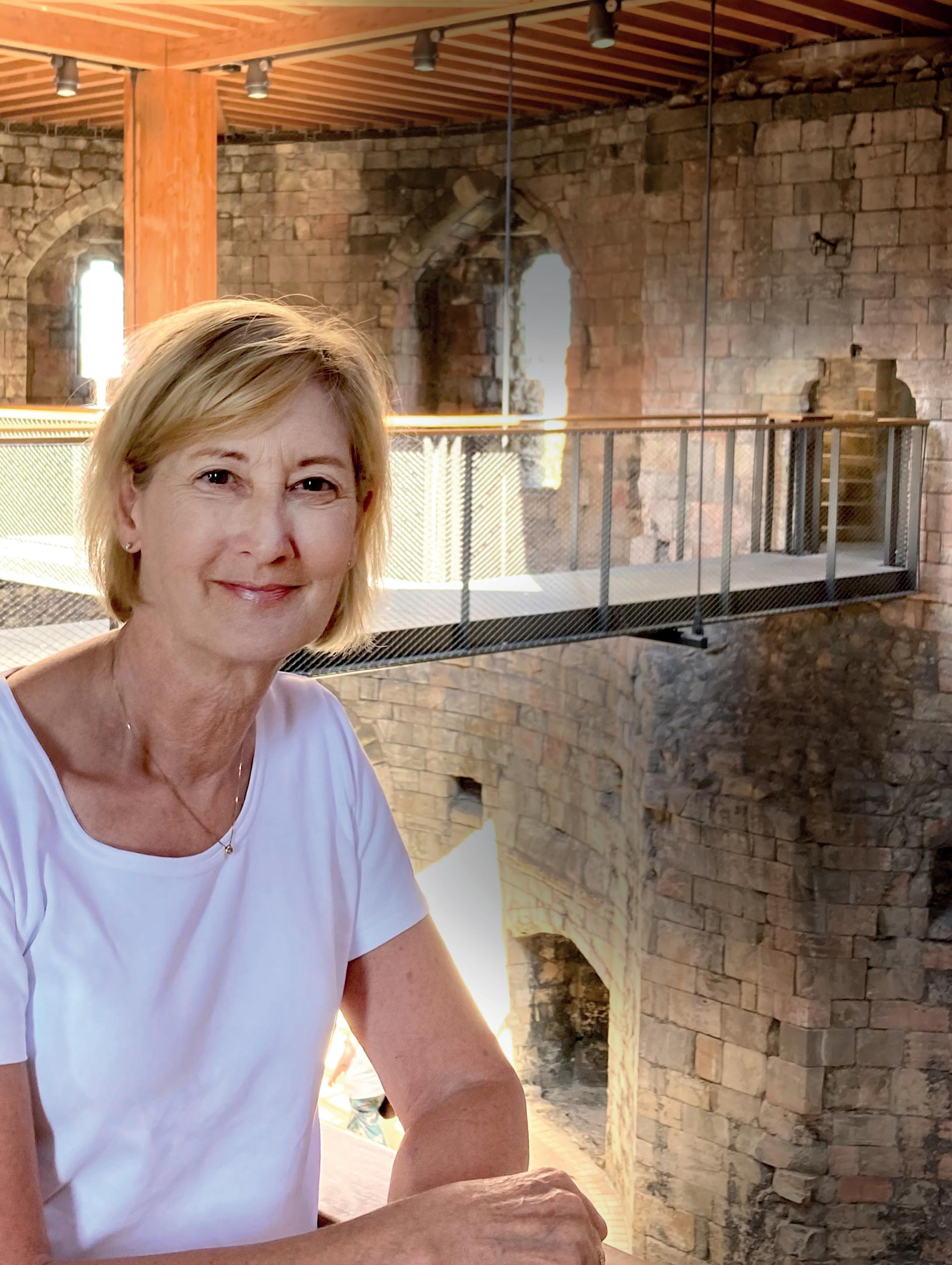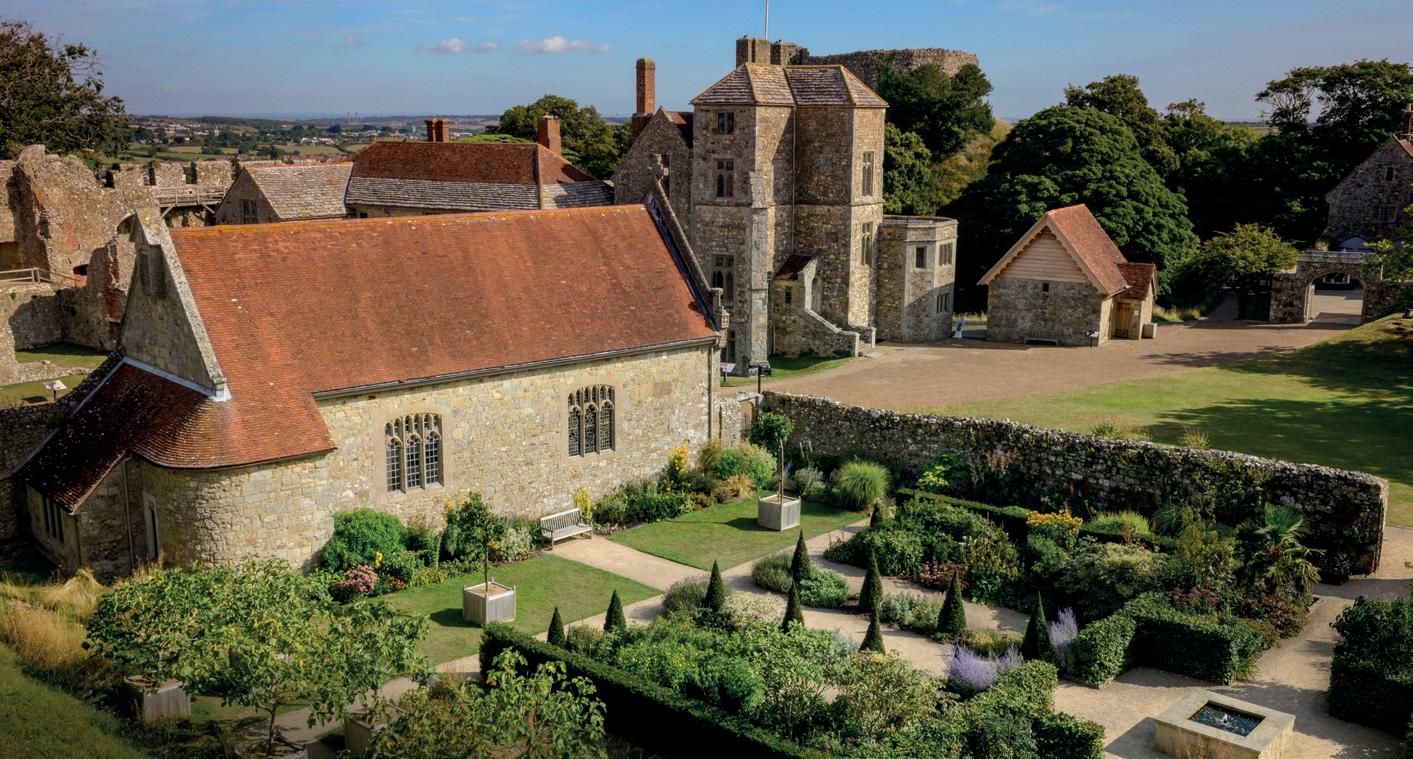
3 minute read
NEED TO KNOW
NEED TO KNOW
A TRUSTEE’S POINT OF VIEW
Suzanne Wilkinson, communications volunteer, interviews recently appointed trustee Sue Wilkinson to find out more about her role.
Carisbrooke Castle where Sue’s love of history began WHO IS SUE WILKINSON?

Sue is a Commissioner of Historic England and until the end of 2016 was an executive board director at the National Trust, where she was the board lead on tourism with responsibility for membership, fundraising, volunteering and tourism. She is also a trustee of the Canal & River Trust whose remit includes 2,000 miles of waterways.
What attracted you to volunteer at English Heritage? English Heritage is rooted in history and my love of history began with my Isle of Wight childhood near Carisbrooke Castle. My first memory of the castle’s resident donkeys drawing up water in the well house, by means of a 16thcentury treadwheel, is a little bit of magic that remains with me to this day.
What challenges lie ahead? Attracting more income and a wider audience is the overriding challenge. I’m encouraged that a young charity, such as English Heritage, under Kate Mavor’s leadership, is becoming selffunding so swiftly.
What excites you most about the next year? Gerard Lemos takes over as chair of English Heritage next year. He has highlighted the importance of local communities to English Heritage and living in Dorset I fully endorse that. We may not have the biggest visitor attractions, but the Christchurch Castle ruins and the Norman House, where the Lord of Christchurch lived, are great places to soak up history before relaxing by the river.
How will ‘local community’ translate into action? Local fundraising is crucial, especially for those considering leaving a legacy in their will. I witnessed this when I worked at the National Trust, where legacies were left by those who had a particular fondness for a place, either through volunteering or through regular visits. Now that we are no longer government funded, we need to dispel the notion that only rich people leave legacies. That’s simply not the case. Little sums add up and volunteers can make a huge difference, because even if you aren’t able to now, you can make a promise for the future.
What would you like to say to our volunteers? Thank you – we could not do it without you. All trustees say the same but it’s genuinely meant. The growth in volunteer numbers following Covid-19 and lockdown shows a new appreciation for local spaces and makes many of us feel more connected than ever.
Thank you – we could not do it without you
How do you see volunteering evolving? The variety of roles is expanding and we need to publicise that more. As well as gardening or stewarding, there are translation volunteers at Hadrian’s Wall, animal volunteers at Boscobel House and maintenance volunteers to remove graffiti and change locks.
Some volunteers choose to use their existing skills, such as photography or journalism; others see it as an opportunity to try something new, such as storytelling or archiving. Whichever route you take, friendship and supporting the local community will improve your quality of life.
How are we going to attract more volunteers and Members? We must keep our message fresh to attract new support. The expectations of visitors are changing so we have to modify our offering too. There are definitely opportunities for us to be more playful and imaginative – but I’d stress that just because something is fun or a bit different doesn’t mean it will be less accurately researched. There are lots of ways to authentically interpret and celebrate the past beyond the traditional, familiar methods – take the recent art installation at Housesteads Roman Fort, for instance.
How much of your time does being a volunteer trustee take up? There’s a lot of reading followed by board meetings, so together with my other trustee commitments, volunteering takes up to three days a week. I certainly don’t want it to sound onerous though – it’s a privilege. ■
BEING A TRUSTEE – WHAT’S INVOLVED?
Trustees sit on the board of English Heritage. Their role is to provide strategic direction and constructive oversight to make sure English Heritage delivers its goals and that it’s managed effectively. For more information please visit www.english-heritage.org.uk/about-us/our-people/our-trustees










